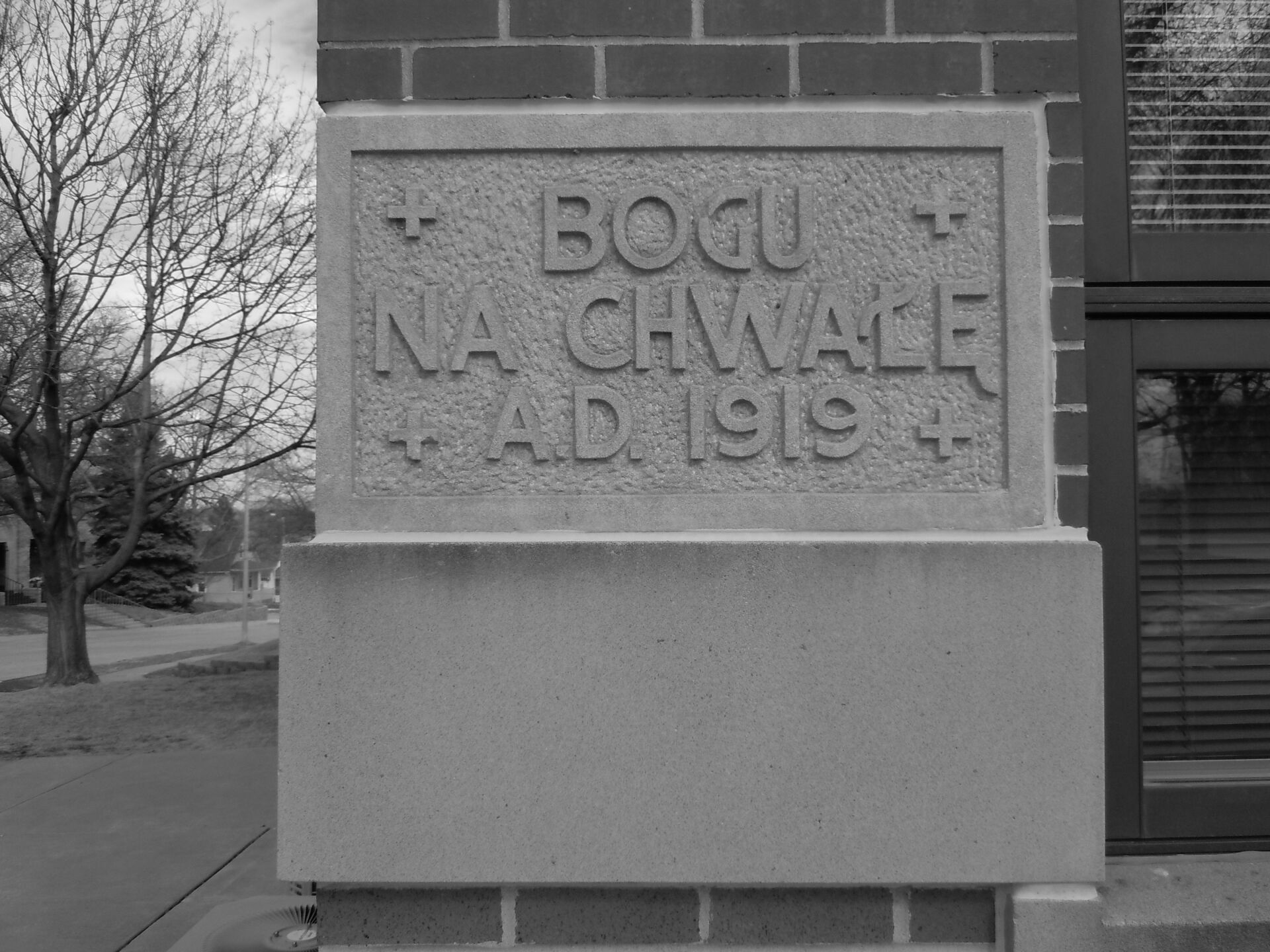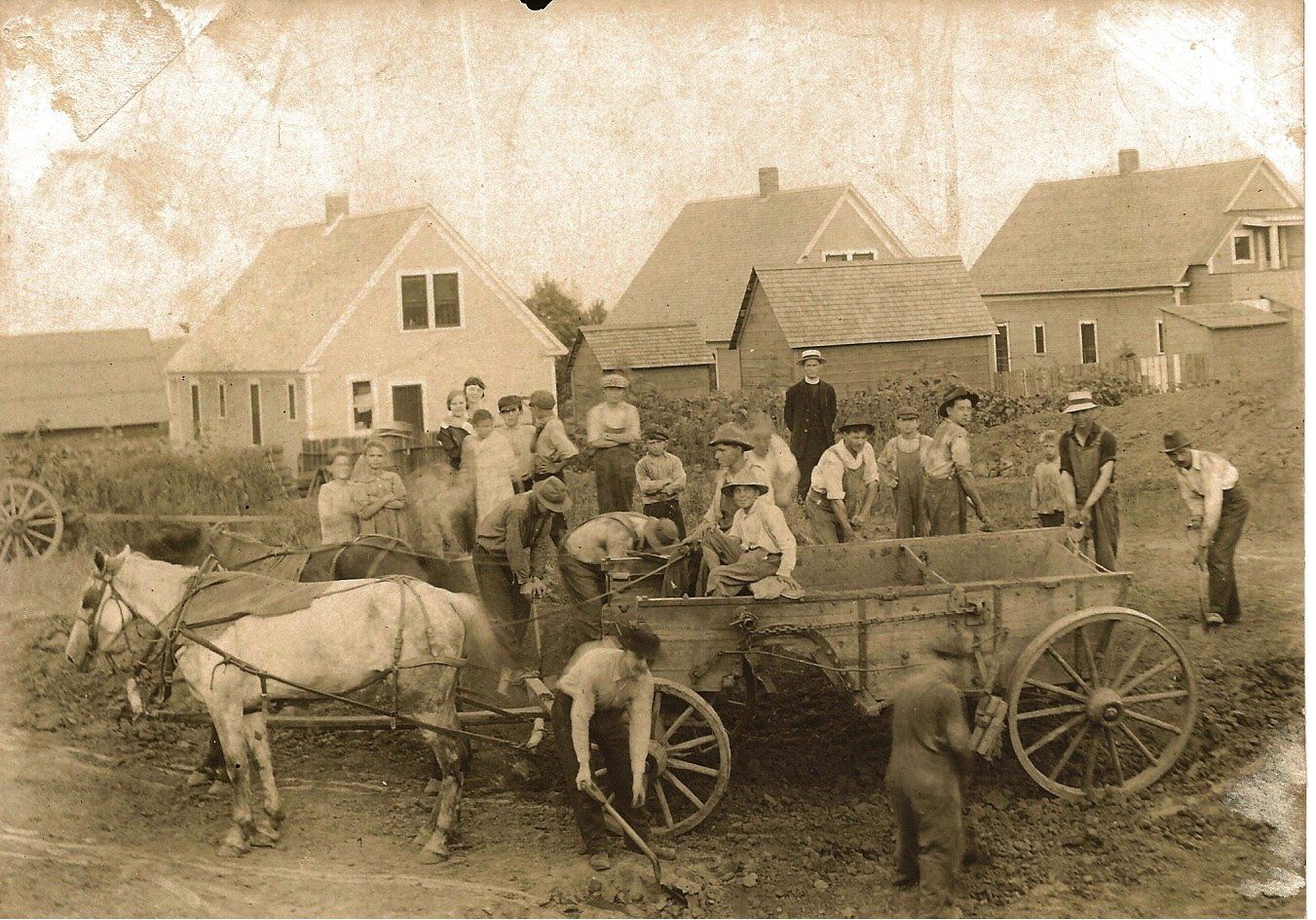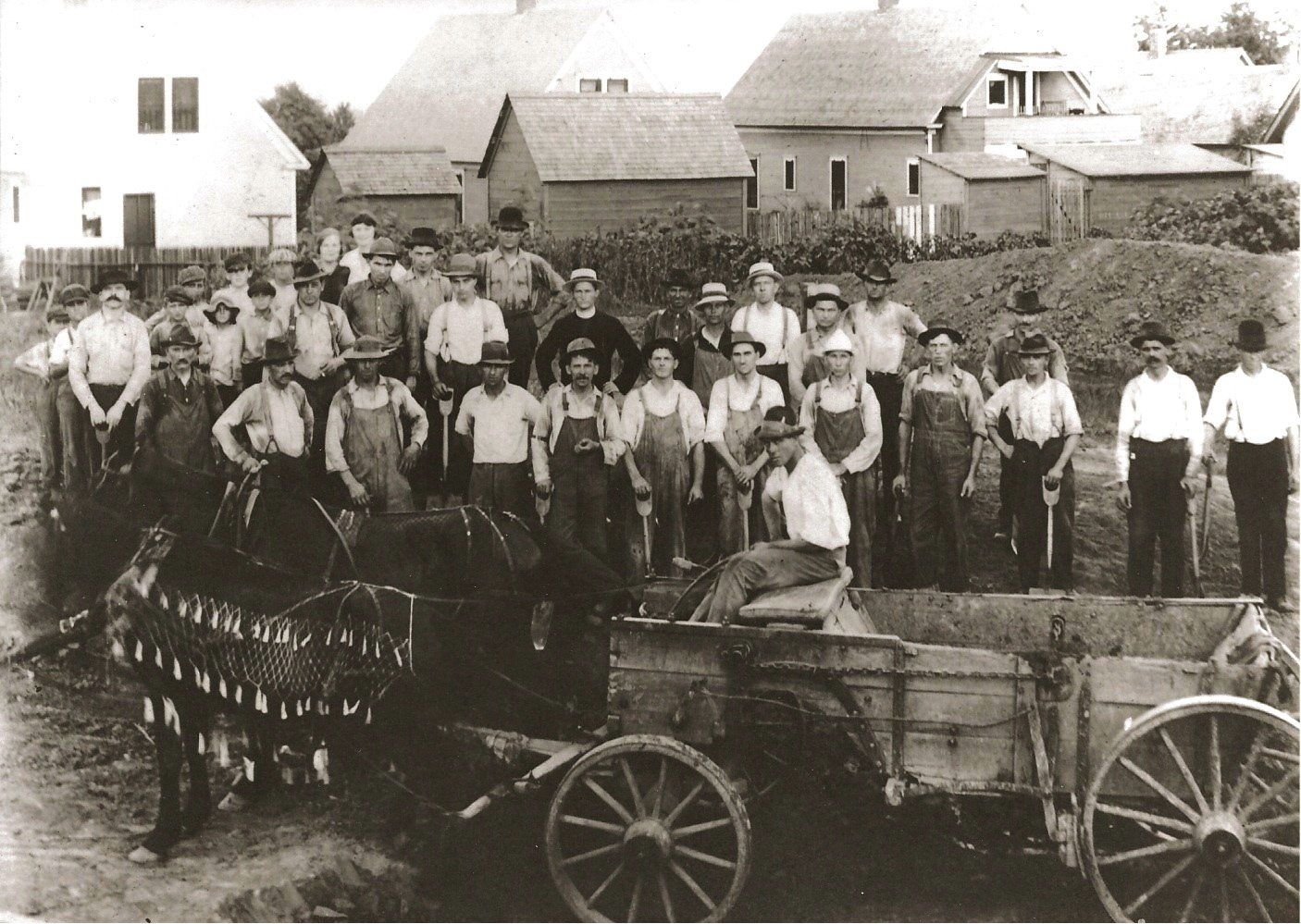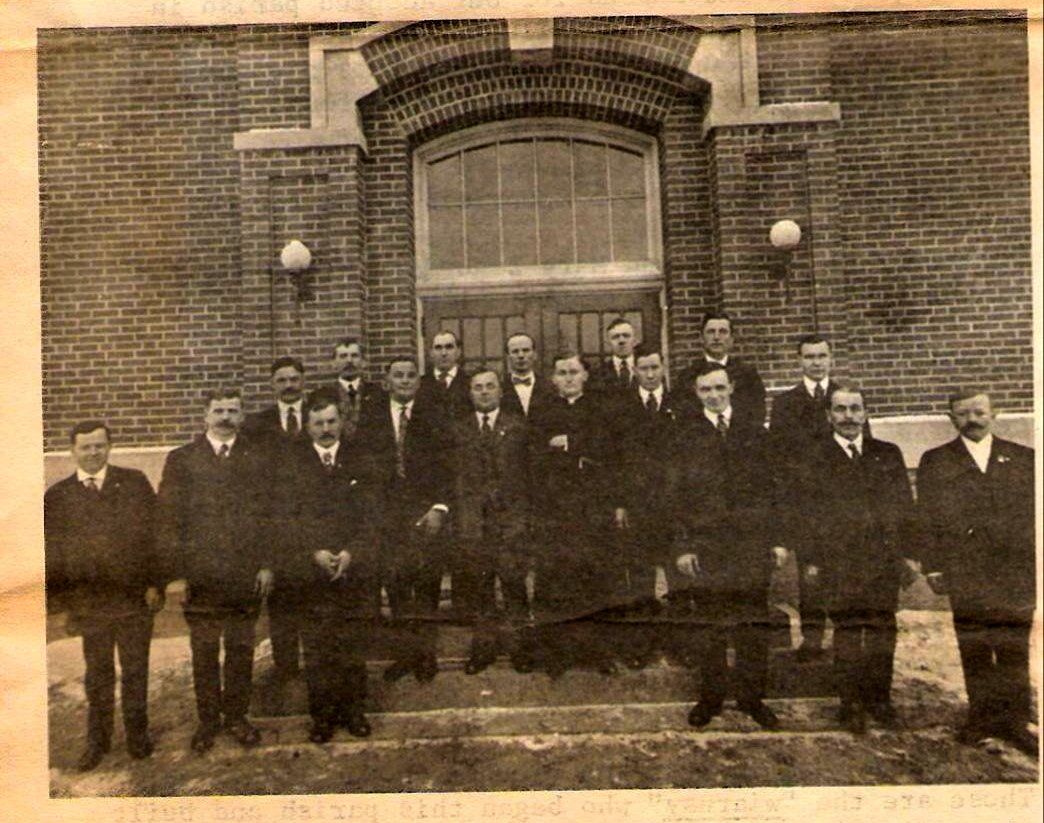The History of our Polish Heritage in South Omaha
Polish life in Omaha began with the arrival of Polish immigrants in 1886. As the Polish population grew, the deep faith and pride of the Polish people was evident in their desire to have a Polish Church. They had worshiped at St. Joseph, St. Mary Magdalene and St. Wenceslaus Churches. They felt the need to express themselves in Polish.
In 1919 St. Stanislaus Parish opened with the appointment of the newly ordained Father John Wieczorek, Pastor. Church services were held above Jochim’s Bakery 41st & L Street for twenty to thirty families. Sisters from St. Francis Assisi brought altar cloths, candles, hosts, and wine. Local dedicated Polish people cleaned, arranged the altar, made bouquets, set up chairs, etc.
Among the earliest parishioners who helped Fr. Wieczorek begin construction were generous families: Barnash, Bogaz, Fic, Janeczko, Kobielski, Kocol, Labedz, Lukowski, Maliszewski, Papay, Pasieka, Sowa, Trybunalski, Wisniewski, Zagozda and many others. As the building took shape, the community got into the act with children unloading bricks, women making lunches, sewing vestments, altar cloths, etc. holding ice cream socials, bake sales and bazaars to help finance parish needs.
In 1919 the cornerstone was laid at 41st & J Streets and the combination brick building church and school were completed in 1920. School opened in September (Grades 1 & 2) with the church on the 2nd floor. In 1953 the present church was begun and dedicated in March 1955. The interior of the former church was completely removed and eight new classrooms installed with new heating, lighting, plumbing, etc. School re-opened in September 1955.
Payment on the church debt was completed in 1962. In 1968 the church was repainted and the ceiling lowered to reduce heating costs. Church and School Endowments were initiated in 1977, 500 Club in 1982 and the Scrip Program in 1997 for financial benefits. Over the years the Polish Festival has grown to be a popular, profitable city-wide bazaar.
With deep appreciation to members of Saint Stanislaus Parish, a school addition was completed in 1999 which included adequate office space, a conference room, library, much needed storage space and a secure entry with one-way glass to make it possible to see and admit people to the building.
Saint Stanislaus has been honored to give eighteen consecrated persons to the service of the church: Fr. Stanislaus Mitera, Fr. Joseph Micek, Fr. Richard Ciurej, Fr. John Michalak, Fr. Martin Stillmock, Fr. Walter Wancewicz, Fr. Francis Nigli, Fr. Phil Flott, Deacon James Staroski, Deacon Daniel Saniuk, Brother Stanislaus Sobczyk, Sr. Bronisla Staskiewicz, Sr. Henrietta Sobczak, Sr. Ignatius Kowal, Sr. Edwarda Kanger, Sr. Rosalita Smolen, Sr. Rose Ann Stillmock, Sr. Virginia Swierczek, Sr. Charlene Stuczynski, Sr. Jean Marie Adam and Sr. Lorraine Hauptman.
The dream lives on remembering the “pioneers” who planted the seeds of faith and hope evident in the climate of witness to the Catholic identity and lived faith of St. Stanislaus parishioners, teachers, and students.

Architectural Design of St. Stanislaus Church
St. Stanislaus Church is designed for the Mass; but, because it is named after and decorated with images of St. Stanislaus, it has an even more powerful reflection on the Mass for the people of Polish descent. This patron of Poland lived his life in reflection of the life of Christ. Having the images of his life portrayed by the stained-glass windows represents the beautiful idea of how the light of the Son of God shines through one of his beloved sons. This is just like the sun shining through the images of St. Stanislaus’ life to glorify them.
This design must have seemed odd for immigrant people who had grown up with the Catholic churches that had been built during the previous thousand years. The vast majority of those churches had been designed to convey a sense of awe and lift our minds towards the heavens. The tall arches that formed their design were meant to draw the eyes of pilgrims up toward the heavens. This design came about as a way of counteracting the Arian heresy, which taught that Jesus was not the eternal Son of God. The Arians believed Jesus was such a nice guy that God adopted him as his son. The high vaulted ceilings of over one thousand years of churches helped people to instinctively know that Jesus was far more than that. Looking up in awe, inspired them to reflect on the true divinity of Jesus.
In the era that St. Stanislaus Church was built, the divinity of Christ was not in question, but it was starting to be taken for granted. The architect wanted to change that, by helping people to see the importance of their journey with Jesus. By the way, it was shortly after that time period that Catholic churches started to be designed more like Protestant churches, which usually focus more on the congregation representing the presence of Jesus, than the people coming to worship Jesus in the Eucharist.
The design does not lift the eyes towards the heavens with grand arches or long columns. Rather than trying to inspire the worshipper to imagine Our Lord in heaven he focuses our eyes to the front of the church where we are faced with the altar of sacrifice, the crucifixion scene, and the tabernacle.
The best way to describe the layout of St. Stanislaus church is to look at in the context of our lives. Many of us were brought into church for the first time by our parents. The idea they had was to help us become members of another family, the family of God. Coming into the church each time through the doors should be a reminder of our baptism. This is why each door has a place for holy water. Each time we bless ourselves with that holy water, we should be renewing our journey to be more fully a member of God’s family. At that point we step into the main body of the church or the nave. The beauty of the church is meant to bombard our senses with the reality that this new reality of family is greater that the home we just came from with our parents.
Naming this part of the church the nave is a reminder that we are safe in the Barque (or ship) of St. Peter. In line with churches of the past centuries, St. Stanislaus is built to look like an upside down boat. The keel of the boat, which keeps it stabile, is the peak of the roof. The bell tower is the “outboard motor”. The cross on it is the power that is to draw us from this earth, to bring us to heaven. This is the reason it is not like a normal boat, which is simply to help us make our way around areas of this earth. The ceiling above the nave of this church has seven support beams, representing the Sacraments. Each of these supports is to help us be safe and strong on our journey. The style of the support changes as you enter the sanctuary. Here you see an elegant arch support, which represents Christ himself, who is the whole focus of the sanctuary.
All of the lines of the architecture of St. Stanislaus Church keeps drawing us forward. As we go down the aisle our eyes are drawn to the sanctuary. It is simple but magnificent. There is no doubt that it is about Jesus the Christ, the King of Kings. As we find our pew we should remember that without Him we are simply a smart animal. With Him we are potentially a part of a royal family. The traditional gesture of the church to remind us of this is the genuflection. We go down on one knee just like people have done before kings for ages. In the movies we see kings taking their swords and touching the soldier on one shoulder and then the other. Most people never realize that this soldier or knight is placing his life at the service of the king with this gesture for that king can move his sword from shoulder to shoulder by going over the head or going right through the neck. This loyal subject is letting the king know that he is ready to live or die for the king and his kingdom. We genuflect to let the King of kings know that our lives are in His hands.
In our pew we are with the rest of the Body of Christ. Our focus is on the head of the body, Jesus. Like many churches, St. Stanislaus is built in the form of a crucifix. The main aisle and the communion rail form the cross. We are the Body of the Christ on that cross. As we come to communion we come closer to the heart of Jesus. When we move away from the heart we are faced with the Stations of the Cross, which depict what happened because we turned away from the Lord and sinned. We are also faced with the confessionals. This is the path back to Christ.
Week after week, as we continue our journey from the baptismal font to the front of the church building we come closer and closer to the altar of sacrifice, the crucifixion scene, and the reality of how Christ has shown His love for us. It can be a scary thing to face, because it should remind us of what we are expected to sacrifice. As we look at that altar and the crucifixion we also face the reality our own death. But Jesus is there in the tabernacle telling us to be not afraid. We can’t see it, but behind that crucifixion scene is the sunrise reminding us of the resurrection. Having St. Stanislaus Church orientated toward the east makes this very clear. It is our destiny, but we must be willing to accept all that it involves, being baptized into Christ’s death so we may receive a share in His resurrection. Most of the surface of the main aisle has been covered with carpet, but there is still a fair amount near the sanctuary that adds more to this image of our journey. The terrazzo flooring is designed to represent a stream or river flowing toward the sanctuary. The way it is styled gives the impression that the flow is rushing you forward toward all that is in the sanctuary. This can be scary if you are not feeling close to Christ. If you are aware that you have been baptized with Jesus and that you will die with Jesus, you will not fear being helped by the flow of grace that is also leading to your resurrection with Jesus.
As we make this journey into church and up to Communion we find ourselves surrounded by the images of the life of St. Stanislaus. These images of his life are to challenge and encourage us on our journey through life. Stanislaus did his best for the Lord. Each of our visits to the church is a reminder for us to examine our lives to see how we are doing.
One other point of interest in the design of the church is the choir loft. Even though the musicians currently have their place in the nave of the church, the original design of this part of the architecture holds on to the century old concept of the choir. The loft is in a high place in church, but in the back, so the people attending Mass have a sense of the choirs of angels participating in the liturgy from heaven. Back then the musicians were not seen but the sound of the music comes from above to emphasize this theme.
All of these things and more were put into the design of the church to help us understand our journey. It is a teaching church. St. Stanislaus Church contains the view of our faith in terms of being safe in a boat. It helps us understand that we are being brought into the family of God by being decorated like a true house of God with images of the family of God and the important events of the family’s life. It helps us understand our path from our rebirth in baptism to our death and resurrection in Christ. It is formed like a cross with us as the body and with this sanctuary is Jesus, the head of the Body of Christ. But there is one more major image that we should recognize and that is that this is the throne room of the King of Kings. The sanctuary is the place of the King. He is not on a regular throne. His throne is the Altar of Sacrifice and the Cross. With the crown of thorns, which is His crown of glorious love, he reigns over his people. As the people of God we are continually invited to come to Him for the help we need. As our King He has offered Himself for his subjects. So we humbly but confidently come to Him and with our genuflection, offer our lives to Him, but also seek His help and assistance.
With this design to guide the people of St. Stanislaus, we can be confident that we know the right path, for everything reminds us of Jesus, the Way, Truth and Life.
Written by Father Frank Baumert.





